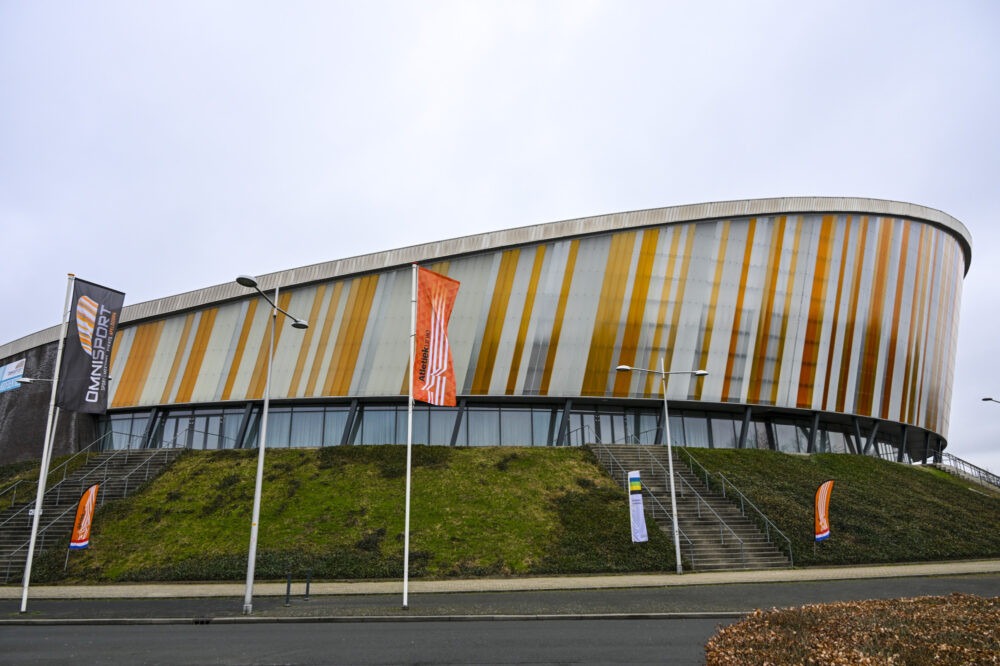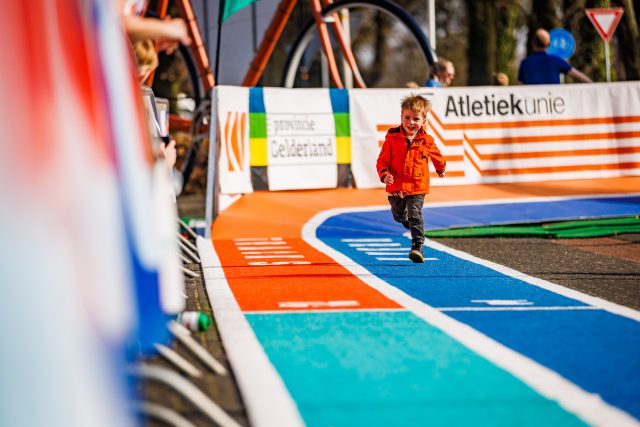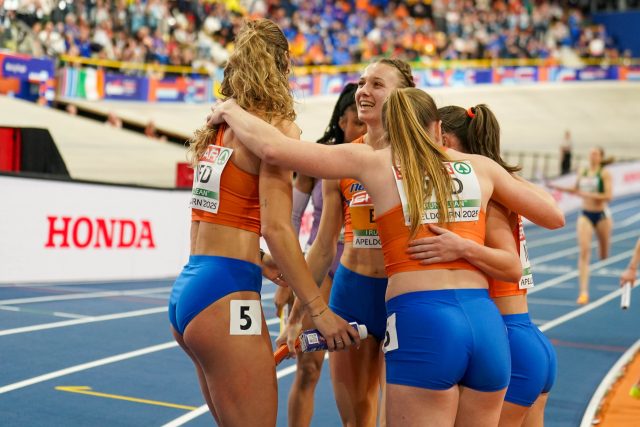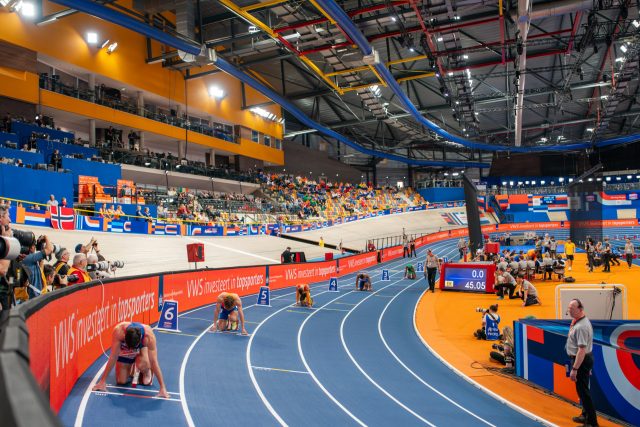
Organising a world-class sporting event like the European Athletics Indoor Championships is an immense logistical challenge, requiring years of planning, a dedicated team and an ability to solve complex problems on the fly. For the team behind the 2025 edition in Apeldoorn, preparation has been a finely tuned operation—one that has tested their expertise, flexibility and teamwork to the fullest.
Building a World-Class Event From the Ground Up
The event is orchestrated by TIG Sports & Events in partnership with the Dutch Athletics Federation. While the Dutch Federation handles the competition itself, TIG takes on everything else—logistics, commercial elements, branding and venue transformation. “Make a great team and start building it,” says Noor van der Lugt, event director at TIG. “When you have a good team, everything will run smoothly.”
That team started small, with just 10 people two years ago, gradually expanding to 75 members of the Local Organising Committee (LOC) as the event drew closer. With expertise spanning finance, marketing, transport and infrastructure, this group, managed/headed jointly by Van der Lugt with Amy Kortbeek of the Dutch Federation, has worked tirelessly to ensure the event is ready to welcome athletes, spectators and media from across Europe.
Overcoming Logistical Challenges
One of the biggest hurdles has been the venue itself. Omnisport Apeldoorn, while a top-tier athletics facility, is relatively compact for an event of this magnitude. Every square metre had to be carefully planned, leading to creative solutions such as constructing a media centre outside the main venue and using an external location to accommodate essential event infrastructure.
“We even had to build on the cycling velodrome inside the venue,” Van der Lugt explains. “That was a major challenge because the floor is fragile—it’s not designed to support heavy structures. We had to be incredibly careful with the construction.”
Beyond the venue, managing accommodation and transport for teams posed another complex puzzle. With more than 1,500 expected attendees spread across 14 hotels, the LOC had to wait until the final numbers were confirmed just weeks before the event to finalise all arrangements.
Innovation and Athlete Experience
This year’s European Athletics Indoor Championships is set to be one of the most innovative yet. Among the new features is the introduction of wavelight technology—an LED pacing system which is designed ostensibly to enhance the spectator experience and for presentational purposes.
Initially approved for entertainment purposes only, the team successfully lobbied for its use in competition. “We’re the first championship to use wave-light in a competitive setting,” Van der Lugt notes. “European Athletics approved its use, and now it’s set to be a game-changer.”
The event will also feature the first-ever 4x400m mixed relay in an indoor championship, as well as an integrated para-athletics event, demonstrating a commitment to inclusivity.
“We even have a dedicated grandstand for spectators with visual impairments,” says Van der Lugt. “They’ll have commentators providing live descriptions so they can fully experience the competition.”
Another innovation is a unique shot put structure, with safety nets suspended from the ceiling rather than traditional ground-based barriers. This allows for better visibility while maintaining safety standards.
Leaving a Legacy
Beyond the competition, the championships aim to make a lasting impact. The event’s tagline, Moving People, isn’t just a slogan—it’s a mission. The social activation programme, developed in partnership with the Province of Gelderland, has engaged communities in athletics over the past year. From school programmes to public running events, the initiative is designed to inspire people to take up the sport long after the championships end.
The Orchestra Behind the Event
With so many stakeholders involved—including European Athletics, local authorities, suppliers and sponsors—coordination is essential. Van der Lugt likens it to conducting an orchestra: “Every player has a vital role. If one is missing, the entire performance could fall apart. Our job is to keep everyone in sync and ensure the right notes are hit at the right time.”
That job also includes preparing for any potential crisis. A 30-page contingency document outlines responses to various scenarios, from logistical mishaps to security concerns.
“We hope we won’t need to use it,” van der Lugt says with a smile. “But we’re ready.”
A Unique Challenge in Sports Event Management
Despite TIG’s extensive experience organising large-scale sports events—including for example the Formula One in The Netherlands, the KLM Open, which is part of the DP World Tour Golf, and world championships in rowing and beach volleyball—the European Athletics Indoor Championships presented a unique challenge. “Most events are focused on one sport. This is different,” Van der Lugt explains. “Athletics is many mini-events happening simultaneously. Planning the logistics, entertainment and audience experience across so many different disciplines makes this one of the most complex events we’ve ever organised.”
As the final touches come together, the excitement is palpable. The LOC’s meticulous preparation, innovation and dedication will soon come to life, ensuring that the European Athletics Indoor Championships 2025 is not only a world-class competition but also a celebration of the sport’s power to bring people together.




